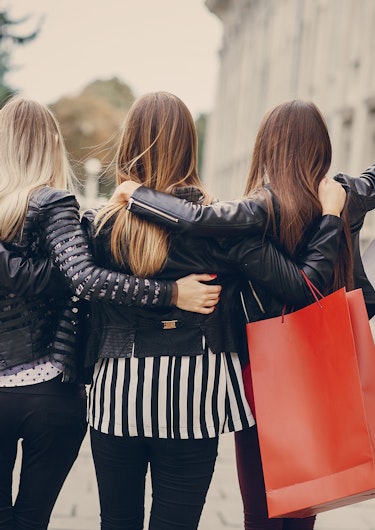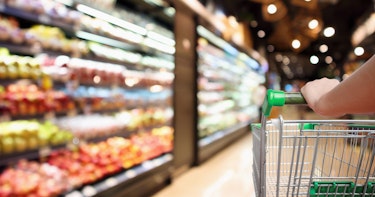
A new retail reality
As a response to the COVID-19 pandemic, consumer behaviour is changing fast and the retail industry faces a new reality. The full long-term impact is still unknown as the consumers are currently adapting to new personal circumstances, but concepts able to adjust to the new normal are more likely to survive the new retail landscape.
In Norway, retail sales and goods consumption have experienced a solid increase since February, and the retail sales index is now 13.2% above its pre-lockdown level. Prior to the pandemic, the trend showed that Norwegian households spent more on services than goods. The strong growth in retail sales is now explained by the fact that the Norwegian consumer have changed their consumption pattern, and in the last couple of months we have spent less on services and more on goods. Going forward, consumption of services is expected to increase in line with the reopening of the economy which most likely will result in decreasing goods consumption.
The increase in retail sales can also be explained by the fact that reduced traveling abroad has increased domestic spending. According to numbers from DNB, Norwegians reduced foreign spending by NOK 3 billion, while they increased domestic spending by NOK 3.25 billion. In other words, Norwegian households have spent more at home than what was saved from not traveling abroad. The generous unemployment benefit system in Norway ensures that a large share of the population have less reason to fear a significant drop in income. The consumers are relatively optimistic and currently still willing and able to spend. If spending continues the positive development, more businesses will be saved, resulting in higher employment.
Winners and losers of 2020 – so far
Even if retail sales have increased and the Norwegian household is optimistic as of today, the virus outbreak has and will impact the various retail sectors differently. Some retailers will exit the pandemic stronger than before while others will not survive. Retailers that struggled prior to COVID-19 are not likely to survive unless they are able to adapt to the new consumer and how they shop. Growth in e-commerce is not a new trend, but recent events have made the online channel even more important and it is now more important than ever to have an omnichannel strategy in place.
The grocery sector is among the winners as they were able to fast-track e-commerce operations to keep up with demand during lockdown. Kolonial.no, the largest online platform for groceries in Norway, experienced an increase in turnover in the private market of close to 400% in the weeks following 12 March compared to the same period in 2019. Meny, the largest supermarket chain in Norway, increased their online sales by 180% during the 2,5 months of lockdown. Despite the significant growth in turnover the profitability remained more or less at the same level as the cost of delivering goods increased accordingly. The increase in the distribution cost do not only apply for the grocery industry, but retail in general. Due to shut-down borders and a distribution industry with most of its staff on furloughs, the transportation cost has increased too. Online grocery sales have experienced a growth in the Norwegian market in recent years, but the growth is expected to accelerate as a response to the pandemic. According to a survey by CommerceHub across the US, 68% of consumers are likely to subscribe to delivery services for groceries after the pandemic.
In Norway, sporting goods have experienced a positive development as the consumers invested in sports gear and other goods in preparation for an active summer vacation at home. According to XXL, selected categories like watersports, outdoor, trail shoes and home exercise equipment, experienced strong growth in Q2 compared to the same period last year. Sports equipment has seen a strong growth in online sales, and retail chains with an established online platform are the winners.
Due to lockdown, quarantine and home office solutions, people spend more time at home resulting in more home projects. This trend has benefitted home improvement retailers commonly referred to DIY, do-it-yourself. According to a survey by Norstat about one-third of Norwegians used the lockdown to refurbish house and garden. Jotun, one of the world’s leading suppliers of paint, reports triple and quadruple sales so far in 2020.
Service and entertainment related concepts struggle with social distancing. Fitness centres, beauty salons, cinemas, theatres and similar were all forced to close in March and April resulting in dramatically reduced sales in the first half of 2020. The consumers are eager to return to normal life and in line with the reopening of the economy and as people return to work and social gatherings, these concepts are expected to rebound.

The high-street market
Luxury and souvenir shops experienced strong growth prior to COVID-19 and were both able and willing to pay high rents for the right location. The lack of tourists in 2020 and the risk of fewer tourist the coming years will impact these segments, as tourists are a very important group of high-street consumers. According to Bain & Company, the global personal luxury goods market is set to contract between 20-25% in 2020 due to fewer tourists, especially the lack of tourists traveling from Asia. Before the pandemic, approximately two-thirds of Chinese luxury purchases were made overseas. Prior to the pandemic, Luxury brands have remained cautious about entering the online world but is now forced to rethink their e-commerce strategy as more shoppers have moved online. Souvenir shops are perhaps the segment which is hit the worst. No foreign tourists equal zero turnover. Unfortunately, we have already witnessed bankruptcies, and more may follow.
Waves of fear in the leasing market
The leasing activity was hit by a lightning 12 March and momentarily stopped. January and February were solid months and best in class players were looking to expand their business. This abruptly changed. While adjusting to the pandemic, confidence started to rise just prior to summer holiday. During summer small amounts of air was slowly refilling the balloon, and August and September could be a great Indian summer. However, fear of a second wave in Norway in line with a rise in confirmed COVID-19 cases has resulted in stricter limitations and travel restrictions again during August, and occupiers are back on the fence waiting for the right moment.
Despite these short-term dramatics, we still expect best-in-class players to expand again when numbers of infected has stabilised at acceptable low numbers. It’s important that landlords and occupiers help each other in these challenging times to avoid further bankruptcies. 2020 will not be the best leasing year, but the strong consumption can and hopefully will increase occupiers’ confidence, and 2021 may be a good year. What we do know is that occupiers that survive this pandemic will return stronger than ever fit for the new world.